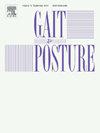Recognition of Parkinson disease using Kriging Empirical Mode Decomposition via deep learning techniques
IF 2.2
3区 医学
Q3 NEUROSCIENCES
引用次数: 0
Abstract
Parkinson's disorder (PD) is a chronic, irreversible neurological disorder that is hard to identify and manage.
Background
In a clinical environment, doctors typically examine the gait irregularity using visual inspections and other indications to determine the gait disruption and significant symptoms of PD. The existing evaluation methods heavily rely on the doctors' knowledge and experiences, which might result in misinterpretation. Many previous studies use spatiotemporal features and monitoring systems to assist doctors in classifying PD.
Methods
Recent studies involve the decomposing techniques for the gait signals in order to lighten the dataset and computational time. In this paper, PD categorization from gait data is proposed using Kriging Empirical Mode Decomposition (KEMD) with several machine learning approaches and Deep learning techniques to estimate the accuracy of algorithms respectively. The outcome of the techniques were evaluated using accuracy, sensitivity and specificity.
Results and significance
The LSTM method produced promising results among the ML and DL techniques, with the highest classification accuracy of 99.10 %, and it outperformed compared to other methods.
基于深度学习技术的Kriging经验模式分解识别帕金森病
帕金森病(PD)是一种难以识别和治疗的慢性、不可逆的神经系统疾病。在临床环境中,医生通常使用目视检查和其他适应症来检查步态不规则,以确定步态紊乱和PD的显著症状。现有的评价方法严重依赖于医生的知识和经验,容易造成误解。许多先前的研究使用时空特征和监测系统来帮助医生对PD进行分类。方法为了减少数据量和计算时间,对步态信号进行了分解。本文提出了基于Kriging经验模态分解(KEMD)的步态数据PD分类方法,并结合几种机器学习方法和深度学习技术分别对算法的准确性进行了估计。评估这些技术的准确性、敏感性和特异性。结果与意义LSTM方法在ML和DL技术中取得了令人满意的结果,其最高的分类准确率为99.10 %,优于其他方法。
本文章由计算机程序翻译,如有差异,请以英文原文为准。
求助全文
约1分钟内获得全文
求助全文
来源期刊

Gait & posture
医学-神经科学
CiteScore
4.70
自引率
12.50%
发文量
616
审稿时长
6 months
期刊介绍:
Gait & Posture is a vehicle for the publication of up-to-date basic and clinical research on all aspects of locomotion and balance.
The topics covered include: Techniques for the measurement of gait and posture, and the standardization of results presentation; Studies of normal and pathological gait; Treatment of gait and postural abnormalities; Biomechanical and theoretical approaches to gait and posture; Mathematical models of joint and muscle mechanics; Neurological and musculoskeletal function in gait and posture; The evolution of upright posture and bipedal locomotion; Adaptations of carrying loads, walking on uneven surfaces, climbing stairs etc; spinal biomechanics only if they are directly related to gait and/or posture and are of general interest to our readers; The effect of aging and development on gait and posture; Psychological and cultural aspects of gait; Patient education.
 求助内容:
求助内容: 应助结果提醒方式:
应助结果提醒方式:


